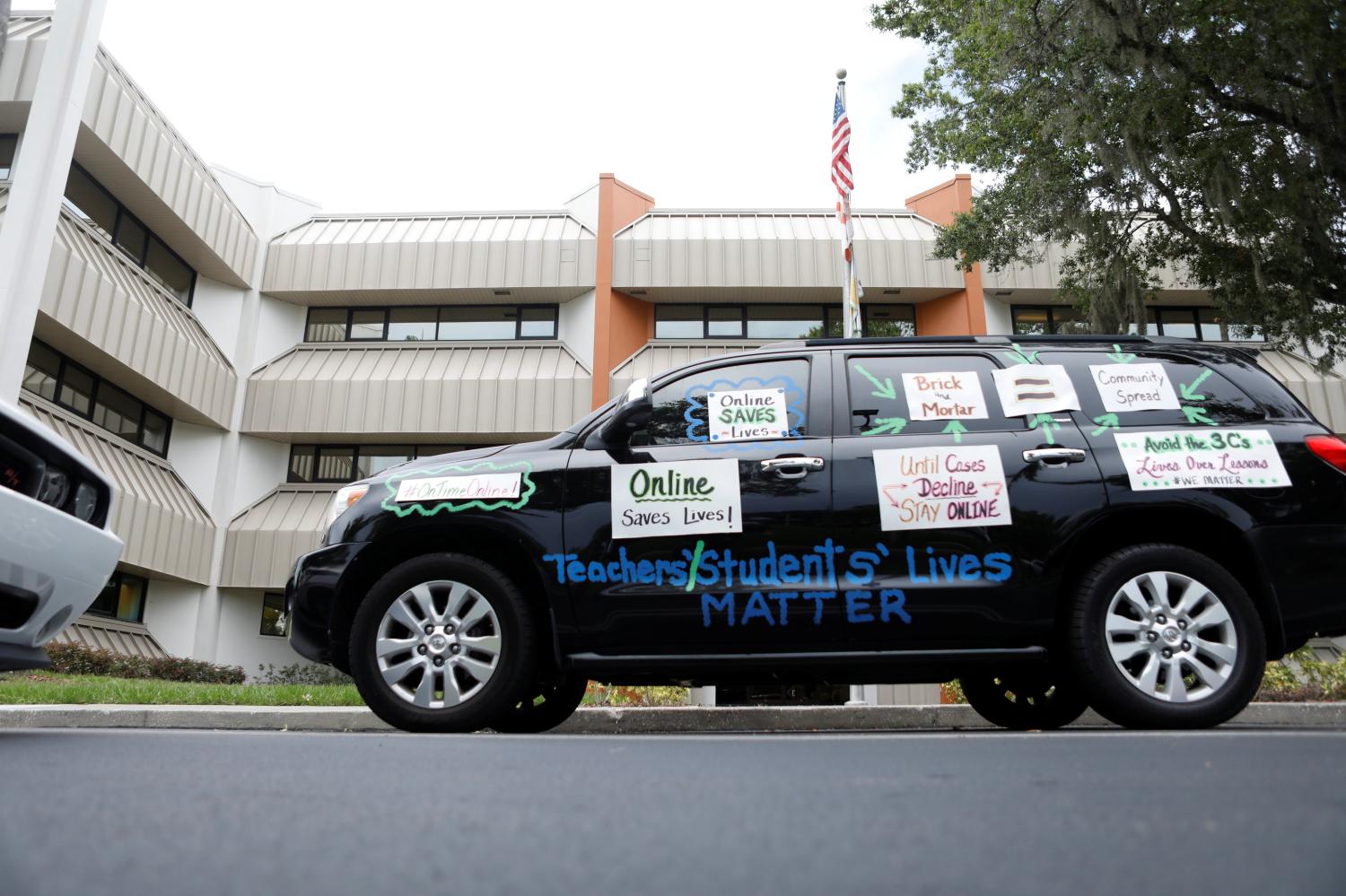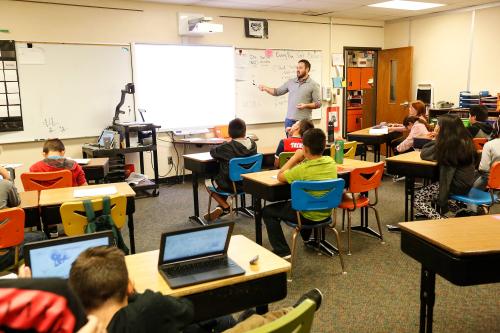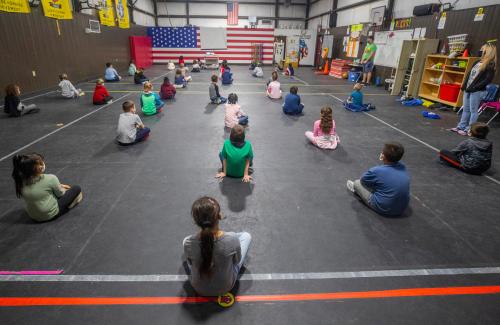Northshore School District in Washington state made national news when it shuttered its doors as a result of the COVID-19 pandemic on March 5, 2020, and served as one of the first school districts in the United States to do so. On March 12, 2020, Ohio Gov. Mike DeWine became the first state executive to issue a pandemic school closure order, but he was soon followed by 48 other governors who put a pause on in-person schooling, most through the remainder of the school year.
Then came fall 2020. While state leaders took a heavy role in spring 2020 school closures, the dog days of summer unfolded to a more “laissez-faire” attitude among top state executives in regard to the fall 2020 schooling decisions. What followed were agonizing reopening decisions that played out in the nation’s over 13,000 school districts, creating lengthy Zoom school board meetings, such as the famous marathon meeting in Miami-Dade. With the venue for school reopening decisions moving from the state to the local level, the teachers’ unions entered the school reopening debate from stage right.
Do teachers’ unions shape reopening decisions?
The reality is, when reopening decisions were brought into the realm of local control, they became far more polarized and political. This should not be terribly surprising. There are far more education interest groups and competing education policy ideas at the state level, making it much more difficult for a single organization to garner a dominant voice among policymakers. When these decisions are brought down into local school board meetings, there remain only a few organizations that are organized enough to exert influence. The teachers’ unions are the largest elephant in the room and the one that, in most school districts around the country, are directly connected to the supply of teachers to the classroom.
With a team of co-authors, I tracked school reopening decisions throughout the fall 2020 semester in 250 of the largest school districts around the country to understand just how much influence teachers’ unions had on these decisions. We measured teachers’ union power in two ways. The first captures a more fixed measure of power that is built up over a longer period of time: the length of collective bargaining agreement. We think of this as a proxy for the detailed working conditions secured by the union. The second is a shorter-term measure, one that captures the reactionary power of teachers’ unions to school reopening decisions. We tracked the Facebook pages of teachers’ unions in our sample for social media posts that made forceful statements on school reopening, including those that discussed lawsuits, membership opinions, and protests.
We find that school districts with lengthier collective bargaining agreements were less likely to start the fall 2020 semester with in-person instruction, were less likely to ever open for in-person instruction during the fall semester, and spent more weeks overall in distance learning. We further find that the shorter-term union power flexes—those captured by the social media posts—were associated with a higher likelihood of reopening for full, in-person instruction during the fall semester. These short-term reactionary responses were not enough to slow the pressure toward reopening; instead, it’s the long-standing, entrenched union power relationships captured by the length of the bargaining agreement that are associated with a slowed reopening timeline.
But what about COVID-19 rates? We find that pandemic severity, as measured by the county COVID-19 hospitalization rate, had no relationship with the probability of in-person reopening. Instead, the other strongest predictors of an in-person reopening during fall 2020 included political partisanship (the share of Trump voters in the county) and demographics (the percentage of white students in the school district).
To be clear, we are not the only authors to document that unions, politics, and demographics matter above and beyond pandemic severity, though we are the first to show these relationships beyond the start of the fall 2020 school year. (You can read four other studies with very similar findings here, here, here, and here.)
Teachers’ unions do their job well—but local school governance may be broken
So, the empirical research suggests that teachers’ unions slowed fall school reopening decisions during a worldwide pandemic, and media accounts suggest their efforts continued as schools returned from winter break. Naturally, some will view union actions as an affront to America’s students and others as a public service.
My hunch is that where one stands right now on the debate around teachers’ unions and school reopening does not depend on nor will it be shaped by the evidence as to their influence on school reopening just presented. Instead, it likely depends on whether and how one has formulated opinions on two other bodies of evidence (some of which has emerged more recently): 1) the evidence on the risks of the pandemic to teachers and students returning to face-to-face instruction, and 2) the evidence on the potential harms caused by distance learning. For those that believe the public health risks of in-person instruction far outweigh the harms caused by distance learning, then teachers’ unions are being unfairly scapegoated for their role in reopening decisions. For those that believe the benefits of in-person instruction far exceed the risks of face-to-face instruction during a pandemic, teachers’ unions are then obstinate, bad-faith actors. I will likely not shift readers opinions here on these fronts, but there is now some solid empirical evidence on the risk of in-person instruction during the pandemic (here, here, here, and here) and the impact of distance learning (here and here).
We should expect teachers’ unions to slow school reopening decisions just like we should expect them to advocate for increased education funding, lower class sizes, or enhanced teacher sick leave. Protecting and representing teachers is their job and they survive to the extent to which they do this job well. Ever since the Supreme Court’s decision in Janus v. AFSCME (2018) that prohibited the mandatory payment of union fees, unions have had to work harder at this job than ever before (as I have written elsewhere). Teachers’ unions are like an insurance policy to which teachers will subscribe for days like this—worldwide pandemics where the job becomes substantially more uncertain.
This should not be mistaken as a ringing endorsement for teachers’ unions to have unfettered influence on reopening conversations. Special interests that represent a few, by definition, exclude many other viewpoints. It is entirely possible, even probable that our localized school governance systems around the country are out of balance—and were this way well before the pandemic. They have become too politically polarized and swayed by entrenched special interests (sometimes nationalized special interests). One solution is to increase the marketplace for local education ideas (consider efforts by parents to form their own unions) such that there is greater competition in the local education space. In these situations, special interests become far less special (and far less influential), thereby helping restore a more balanced form of educational governance.
Ultimately, local education control is not going by the wayside anytime soon (though it is eroding). While some focus their attention toward the teachers’ unions and their role in school reopening decisions, we might also take a hard look at our local school boards and other school governance institutions that decide which voices are heard the loudest when policy decisions are made. The COVID-19 pandemic and school reopening decisions that followed should lead us to scrutinize whether our local educational governance systems are properly calibrated to protect and promote student interests over and above special interests.
The Brookings Institution is committed to quality, independence, and impact.
We are supported by a diverse array of funders. In line with our values and policies, each Brookings publication represents the sole views of its author(s).







